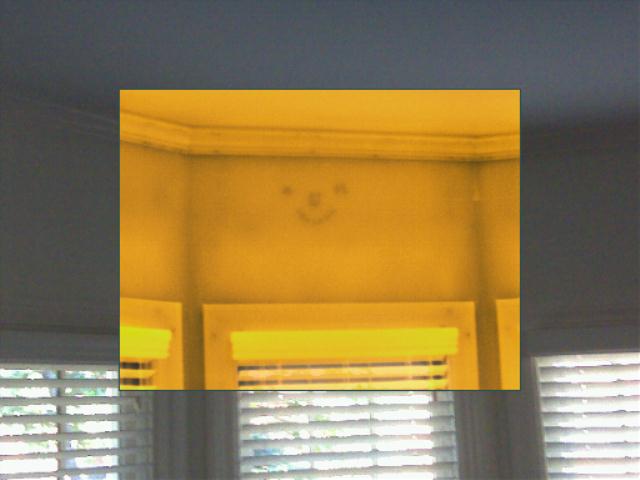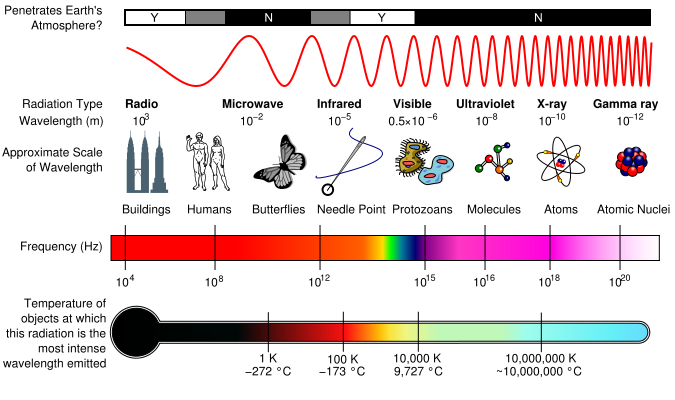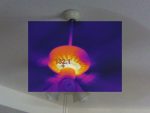 As many of you know or have seen, we at SLS Construction & Building Solutions LLC are now offering Residential, Commercial, & Industrial Infrared Thermographic Inspections throughout Illinois. This has led to a few questions that we thought we would try to answer all in one place.
As many of you know or have seen, we at SLS Construction & Building Solutions LLC are now offering Residential, Commercial, & Industrial Infrared Thermographic Inspections throughout Illinois. This has led to a few questions that we thought we would try to answer all in one place.
In layman’s terms, what is Infrared Thermography?
It is a technology that allows one to visually see temperatures of an item or area.
What is Infrared (IR)?
IR stands for Infrared Radiation, which is part of the electromagnetic spectrum. It is invisible to the human eye because its wavelength in the spectrum is too long for our eyes to detect it. While our eyes may not see it, we can still sense it through feel; i.e. how hot or cold an item is. Unlike visible light, in the infrared spectrum, everything emits an infrared electromagnetic energy depending on its temperature. The hotter the object is, the greater the infrared radiation is emitted.
Can you refresh my memory on the electromagnetic spectrum?
Courtesy of the University of Iowa (sometimes a picture is better than a thousand words)
If you cannot visibly see Infrared, how do you see it?
First, let us take a quick look at the electromagnetic spectrum above. Except for the visible light portion of the spectrum, you can’t see radio waves, or X-Rays can you? However, you can see the result of your X-Rays at the doctor’s office, or turn on the radio to listen to the radio waves, correct? The same is true of Infrared; we utilize special detectors on a camera to capture a picture of the Infrared Radiation being emitted.
How new is this technology?
Sir William Herschel first discovered the Infrared spectrum, back in 1800. By 1917, Infrared was being utilized on the Battlefield by the British. In the 1950’s thermal images were being produced. In 1952, the heat seeking Sidewinder missile was created. In 1965, the technology became commercially available. Since that time, there have been numerous advancements in not only the equipment, but also a better understanding of its uses.
Heh, can you see through walls with it like they do in the movies?
Sorry folks, that is still science fiction – infrared camera’s can only be used to scan the surface temps of an item or area. While we are at it, by themselves you also can’t see air leakage solely with it (you need a pressure difference for one to see some tell tale signs).
So what can it be used for?
With that said, the possibilities here are almost endless as dry & wet area’s change temperatures at different rates. In the residential arena we use it to spot where water leaks are, area’s where moisture is or was in the building structure, missing insulation, air leaks, etc… In some cases with the right conditions it can make it look like we are looking through walls:
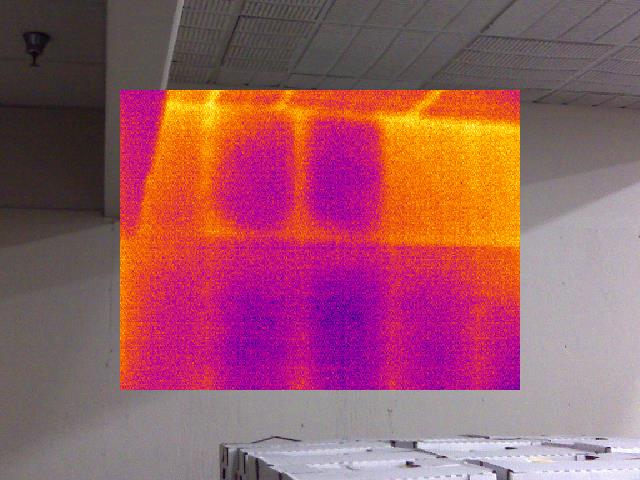
Mold not visible to the naked eye:
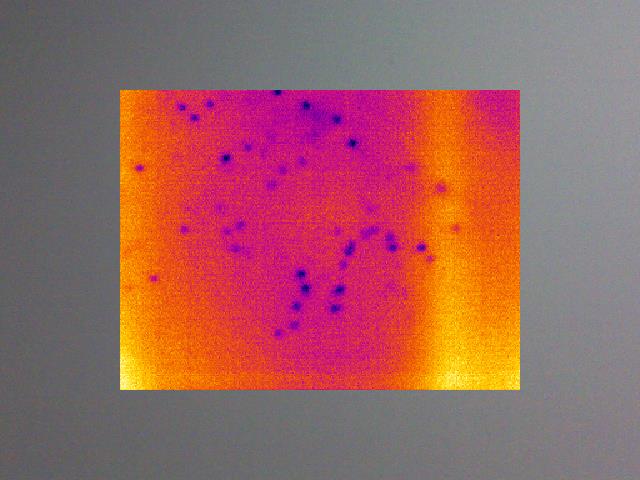
Improperly sealed & insulated duct:
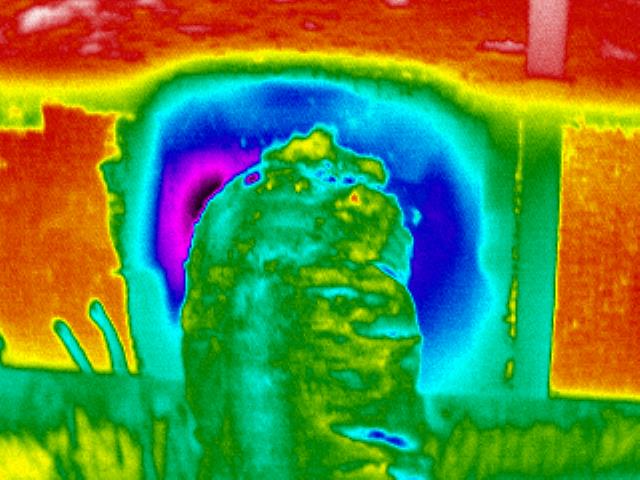
A look at attic insulation packed down:
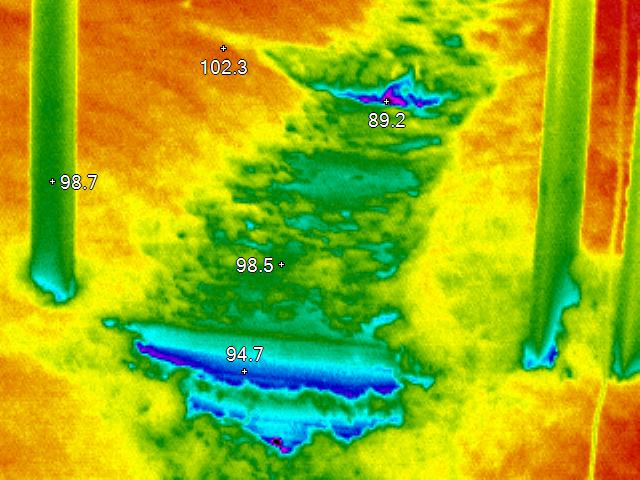
In the industrial and commercial environment, almost everything gets hotter (bad bearing) or might even cool before it fails (blocked lines / fins). In many cases if you have two or more similar items running side by side, you can spot an issue with one of them because it does not match up with the other(s). One of the most popular scans requested by insurance companies is electrical scans looking for bad connections or area’s running above specifications.
Please note that this “appears to be a connection issue,” not that it is not a loose connection as it could also be overtightened which has deformed the connection point.
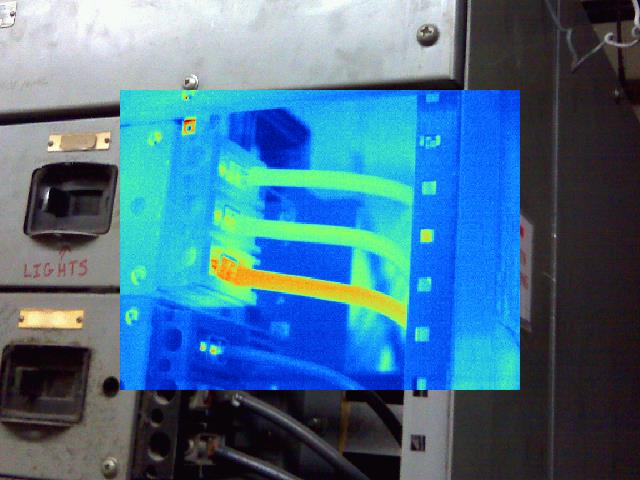
In today’s marketplace, industries are continually striving to improve their manufacturing efficiencies, lower their energy costs, improve product quality, and enhance worker safety, resulting in new applications being developed almost daily. One of the funniest I heard about was a farmer looking to find which female cows were in heat, so he could get them mated. Well since a cow in heat, is actually a few degrees warmer, he drives by them while they are feeding to find out which ones are ready.
Is there anything that it cannot be used for?
Just like any other testing, infrared thermography does have its limitations. Just like visible light, infrared radiation travels through space at the speed of light and can be reflected, refracted, absorbed, and emitted. While the absorption and emitting of heat is a great thing, some items cannot be readily scanned because of how reflective a surface is or if it has a low emissivity.
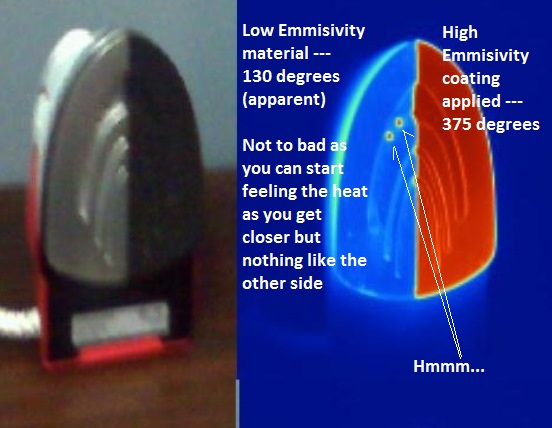
For example, trying to find air leakage in a metal duct system would probably be better off being done utilizing others form of testing. Certain scans require specific conditions to also be meaningful – for example most specifications require a Delta T (Difference in Temperature) of 17 degrees (insulation scan above) or a 40% or higher load for electrical connections. Granted in some cases we can actually add an external factor like a blower door & infrared to not only scan with a lower Delta T, but also to detect where air leakage is occurring.
Can anyone do this?
In all honesty, taking thermal images is quite easy these days especially with camera prices dropping so dramatically. All you have to do is push the auto button and there is an image. The catch though is understanding the physics behind it and being able to spot what is what. For example one instructor talked about one of his early forays into houses & how he ended up with egg on his face. He was scanning a vaulted ceiling & confidently stated – that section doesn’t have insulation… The contractor who was not having that great of a day as he was hearing of all these issues showing up on infrared then proceeded to grab a hammer & smacked a hole in the ceiling showing the insulation. Wait was insulation missing on the other side – nope, the issue was one side was in full sun while the other side was still shaded so the bays were at totally different temperatures.
Some other issues revolve around is that picture taken on auto the best it can be, or would a skilled individual that knows how to adjust the camera to enhance the thermal details of a specific area better? Do they know how to evaluate the image not only at that time or once it is stored and downloaded? Can they prepare a report that is useful / easily understandable by the end user that may not understand what those funny photos represent? Just like most items in life, and especially in the nondestructive testing fields, the interpretation of the information gathered takes both education and experience.
My favorite one – painter that hid a smile under the final layer of paint. Yep it only shows on infrared, have a great one
